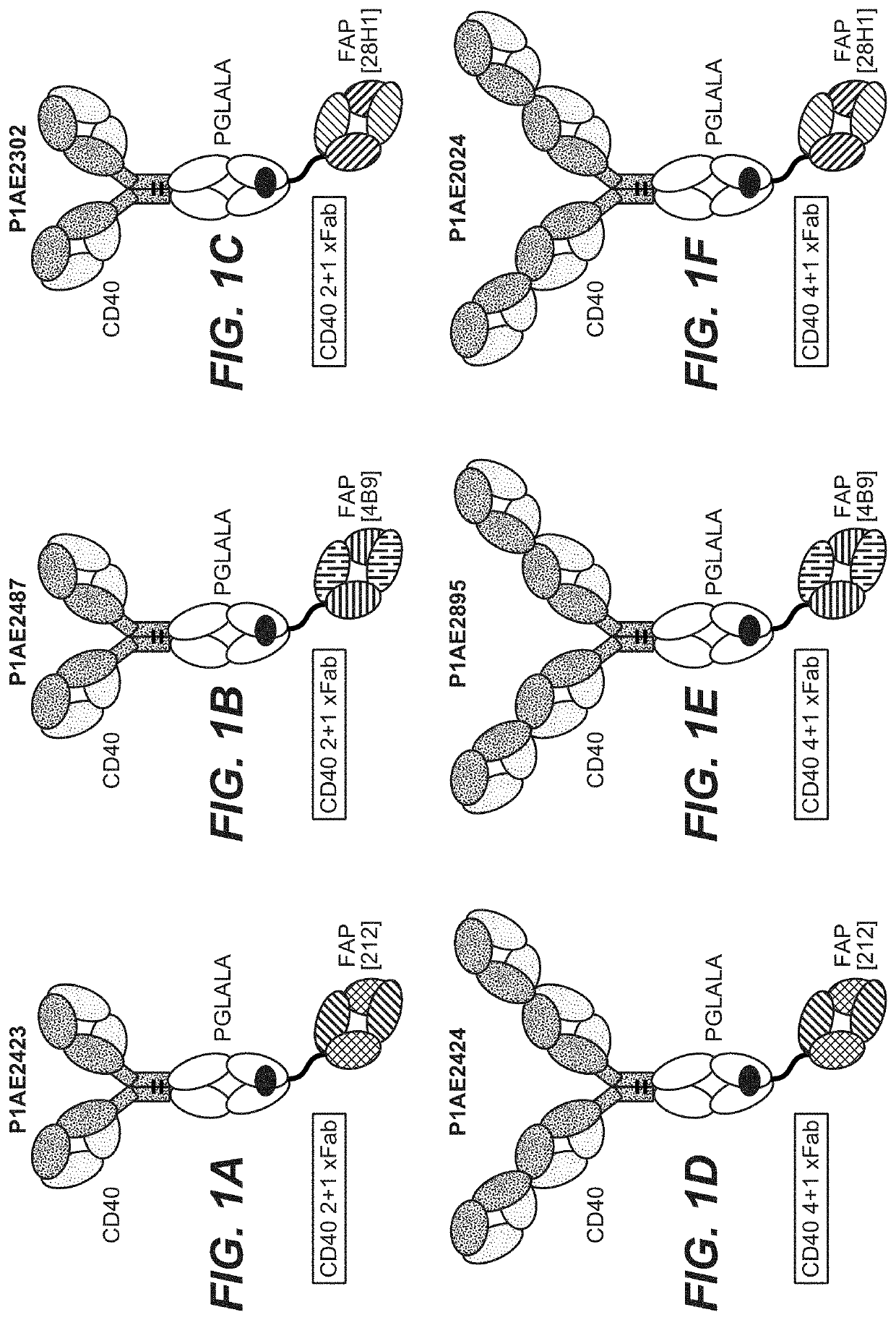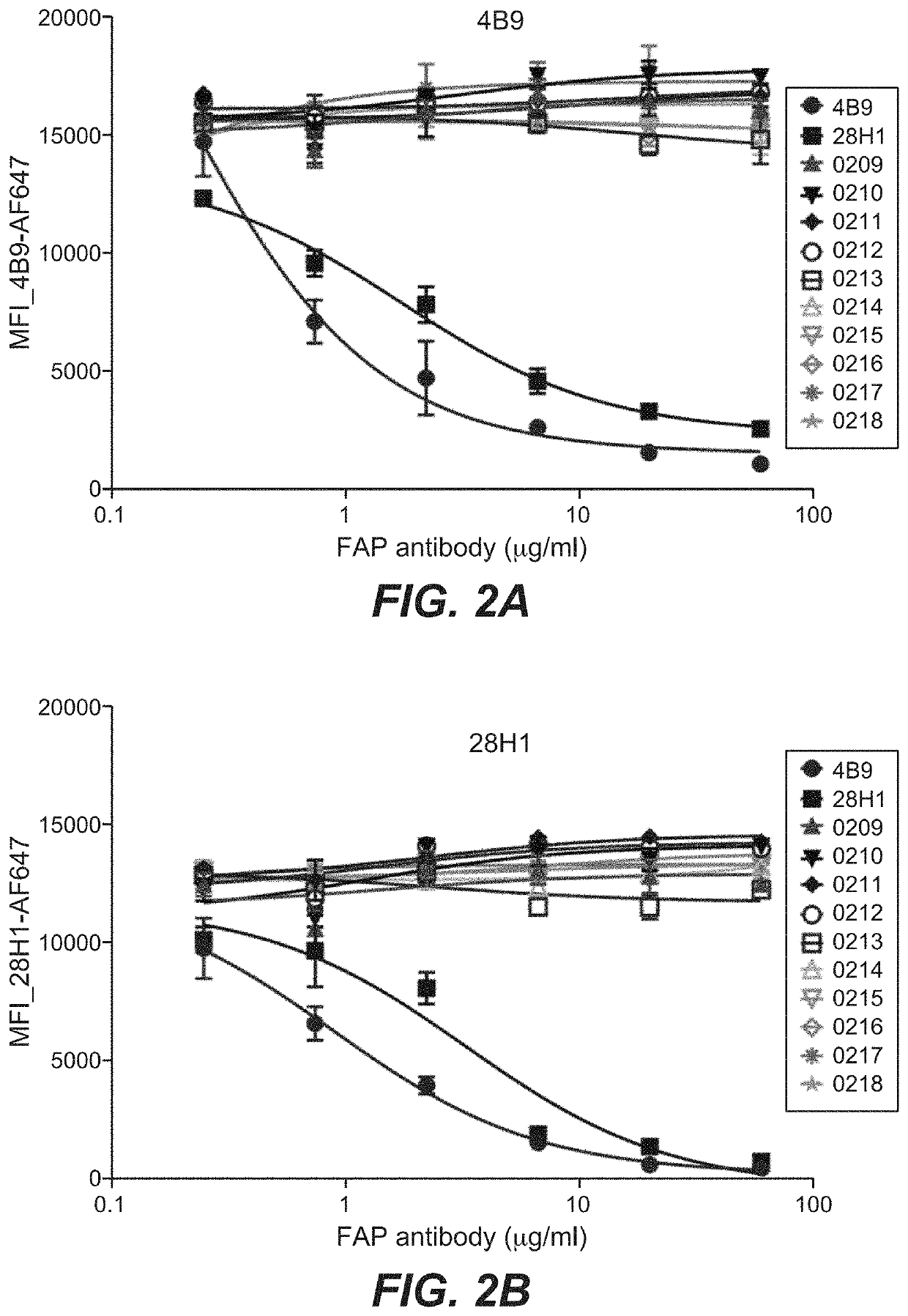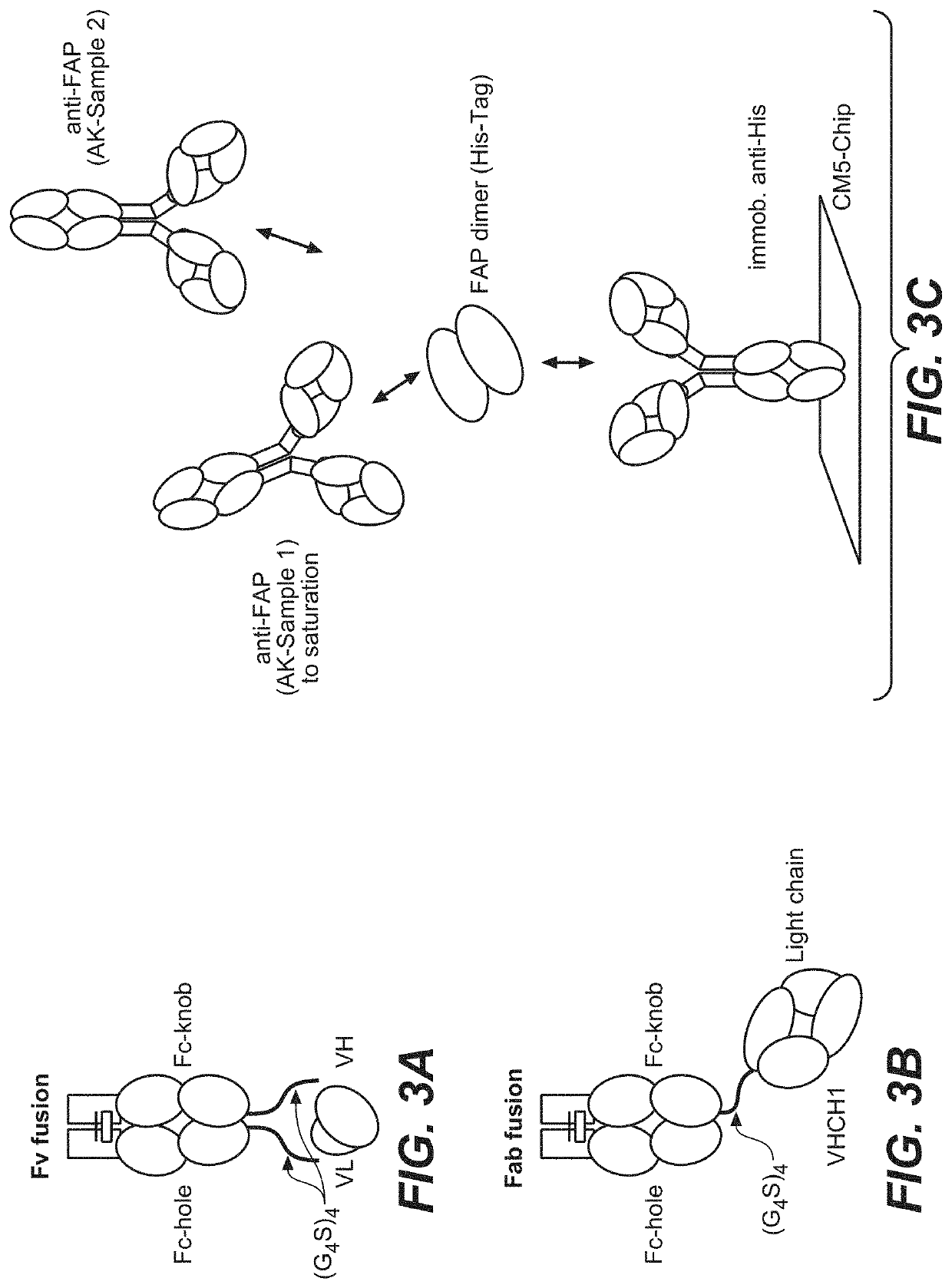Bispecific antigen binding molecules comprising anti-FAP clone 212
a technology of bispecific antigen and binding molecules, which is applied in the direction of antibody medical ingredients, drug compositions, peptides, etc., can solve the problems of narrow therapeutic index, insufficient activation of the pathway on target apcs, and increased complexity of inter- and intracellular signaling mechanisms, and achieve high affinity
- Summary
- Abstract
- Description
- Claims
- Application Information
AI Technical Summary
Benefits of technology
Problems solved by technology
Method used
Image
Examples
example 1
Generation of New Antibodies Against Fibroblast Activation Protein (FAP)
[0571]1.1 Immunization of Mice
[0572]Balb / c and NMRI mice were used for immunization. The animals were housed according to the Appendix A “Guidelines for accommodation and care of animals” in an AAALACi accredited animal facility. All animal immunization protocols and experiments were approved by the Government of Upper Bavaria (permit number 55.2-1-54-2531-19-10) and performed according to the German Animal Welfare Act and the Directive 2010 / 63 of the European Parliament and Council. Balb / c and NMRI mice (n=5), 6-8 week old, received four rounds of immunization with recombinant produced extracellular domain of human fibroblast activation protein alpha (amino acid 27-759; accession number NP 004451) covalently attached to a His tag (SEQ ID NO:78). Before each immunization, mice were anesthetized with a gas mixture of oxygen and isoflurane. For the first immunization, 30 μg protein dissolved in PBS, pH 7.4, were m...
example 2
Generation and Production of Humanized Variants of Anti-CD40 Antibody S2C6
[0617]2.1 Generation of Humanized Variants of Anti-CD40 Antibody S2C6
2.2.1 Methodology
[0618]For the identification of a suitable human acceptor framework during the humanization of the anti-CD40 binder S2C6 a combination of two methodologies was used. On the one hand, a classical approach was taken by searching for an acceptor framework with high sequence homology, grafting of the CDRs on this framework, and evaluating which back-mutations can be envisaged. More explicitly, each amino acid difference of the identified frameworks to the parental antibody was judged for impact on the structural integrity of the binder, and back mutations towards the parental sequence were introduced whenever appropriate. The structural assessment was based on Fv region homology models of both the parental antibody and its humanized versions created with an in-house antibody structure homology modeling tool implemented using the ...
example 3
Generation and Production of Bispecific Constructs with New Anti-FAP Clone 212 and its Humanized Variants
3.1 Generation of Bispecific Antigen Binding Molecules Targeting Fibroblast Activation Protein (FAP) and CD40
[0650]Bispecific CD40-FAP antibodies were prepared in 2+1 format consisting of two CD40 binding moieties combined with one FAP binding moiety at the C-terminus of an Fc (FIG. 1A to FIG. 1C) or in 4+1 format consisting of four CD40 binding moieties combined with one FAP binding moiety at the C-terminus of an Fc (FIG. 1D to FIG. 1F). The bispecific CD40-FAP antibodies included new anti-FAP clone 212 (FIG. 1A and FIG. 1D), however for comparison corresponding molecules with FAP clones 4B9 (FIG. 1B and FIG. 1E) and 28H1 (FIG. 1C and FIG. 1F) were prepared. The generation and preparation of FAP binders 28H1 and 4B9 has been described in WO 2012 / 020006 A2, which is incorporated herein by reference. To generate the 4+1 and the 2+1 molecules the knob-into-hole technology was used ...
PUM
| Property | Measurement | Unit |
|---|---|---|
| dissociation constant | aaaaa | aaaaa |
| dissociation constant | aaaaa | aaaaa |
| dissociation constant | aaaaa | aaaaa |
Abstract
Description
Claims
Application Information
 Login to View More
Login to View More - R&D
- Intellectual Property
- Life Sciences
- Materials
- Tech Scout
- Unparalleled Data Quality
- Higher Quality Content
- 60% Fewer Hallucinations
Browse by: Latest US Patents, China's latest patents, Technical Efficacy Thesaurus, Application Domain, Technology Topic, Popular Technical Reports.
© 2025 PatSnap. All rights reserved.Legal|Privacy policy|Modern Slavery Act Transparency Statement|Sitemap|About US| Contact US: help@patsnap.com



